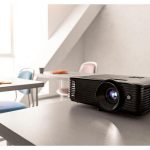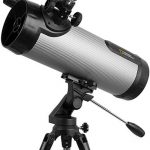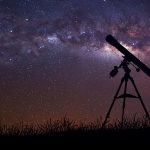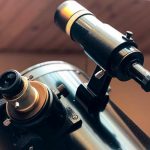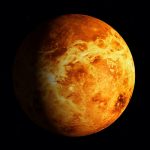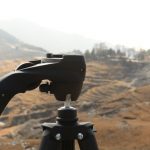Spotting Scope Vs. Telescope For The Budding Astronomer
Wouldn’t it be great if you knew the difference between spotting scopes vs. telescopes – which is best and why? Recently my younger sister told me her eldest child was starting to get interested in astronomy, and she wasn’t sure what to do; should she buy a spotting scope or telescope?
It’s a familiar story, and it usually goes like this; we all want to do the best for our kids, and we’re ecstatic when they show interest in a topic that’s not video games or youtube. Is this you? Are you in a similar situation to my sister? Yeah, I thought so!
You’re afraid that we’ve seen these passing phases all too often as a parent, and no one wants to rush out to buy a decent telescope only for it to sit in the kid’s bedroom to become some kind of ornament. However, at the same time, you’re never going to deny your child the opportunity of taking up a worthwhile hobby.
Anyone thinking about exploring the stars would naturally think of a telescope first and foremost. But there could be a case for looking at spotting scopes first.
Let’s jump right in and check out the differences between spotting scopes vs. telescopes.
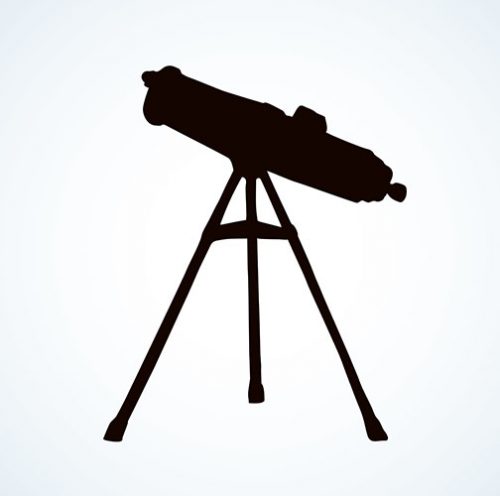
What Are The Advantages Between A Telescope Vs. Spotting Scope?
Compare Image View Spotting Scopes Vs. Telescopes
When you look through a telescope, although initially, you might not realize it, the image you see is upside down. However, because spotting scopes are traditionally used for terrestrial purposes, they incorporate a prism that turns the images the correct way before you view them.
Of course, if viewing the planets and stars upside down begins to bug you, you can add an erecting diagonal prism to the telescope, and this will turn the image the “correct way up” for you; however, adding the prism doesn’t do your images any favors.
Score one for spotting scopes.
Durability Of Spotting Scopes Vs. Telescopes
Durability is another essential factor if you’re comparing telescopes to spotting scopes. Telescopes can be exceptionally heavy to move around, and most tend to be stationary.
Large telescopes are expensive and precision instruments that don’t take kindly to rough handling.
However, if you consider a spotting scope, they are designed for people on the move and taken into the field. Typically a spotting scope will be fog and waterproof, and even if you accidentally drop one, you’re usually okay.
Score Two to spotting scopes.
Mobility Spotting Scopes Vs. Telescopes
Undoubtedly, you can take smaller telescope versions in the field; however, the spotting scope is designed for this purpose, unlike taking a telescope with you.
Clearly, the vast majority of telescopes are not meant to be carried around.
Of course, large telescopes can be boxed appropriately and set up once you arrive at your destination. But this involves a good deal of time for the journey out and back. This is not what is meant by mobility or portability.
Score Three For Spotting Scopes

Comparing Magnification Spotting Scopes Vs. Telescopes
You might say a spotting scope is a medium-range telescope typically with a maximum magnification power of 60x. Perfect for photographers out in the field. But it’s also brilliant for beginning astronomers to use a spotting scope for astronomy if they only need to view the moon, planets, and some deep-sky objects.
Moreover, it’s perfect for discovering if this is just a “phase” or something that blossoms into a full-blown hobby when buying a telescope becomes essential.
Telescopes will always be light years ahead of spotting scopes if it only comes down to magnification. A telescope produces superior image quality when you get into higher power magnification than you’ll achieve with a spotting scope.
Telescopes can cope with low magnification as well as high power magnification even above levels of 140x. In addition to that, telescopes provide the ability to add eyepieces that increase magnification even more.
There is something to bear in mind, however, with a telescope’s magnification. If the telescope’s maximum magnification is 140x, even adding an attachment such as a 2 x Barlow lens will compromise image quality.
Score One For Telescopes.
Spotting Scopes Vs. Telescopes – Built-In Zoom Features
One significant point of comparison between telescopes and spotting scopes is the ability to zoom in and out of the object.
When attempting to zoom in or out with telescopes, it means switching to a different set of eyepieces. Naturally, that would mean carrying extra eyepieces around with you. In contrast, spotting scopes are equipped with a variable zoom eyepiece.
For someone just getting into astronomy, a variable zoom eyepiece is a tremendous advantage because having to swap eyepieces all the time can be distracting.
Score four for spotting scopes.
Spotting Scopes Vs. Telescopes Light Gathering
Spotting scopes cannot offer everyone everything, which is a considerable disadvantage when competing against telescopes because we’re referring to light gathering capabilities.
A telescope’s large diameter OTA (optical tube assembly) will gather massive amounts of light if you compare this to a spotting scope. For the spotting scope to be practical and portable, there must be trade-offs, and one of those is light gathering.
Aperture / Objective Lens Sizes
When you allow more light into the scope, the more precise the image you’ll be able to see, and for this, the bigger the objective lens, the better.
Spotters typically use objective lenses from 45mm to 100mm, the most common range being from 60 to 80mm. On the other hand, telescopes have much larger apertures and lenses to allow for more light. You will usually see telescope lenses from 60mm to well over 140mm.
Score Two To Telescopes.

Spotting Scopes Vs. Telescopes Celestial Viewing
For viewing the sky at night, there’s only one winner, and that has to be telescopes; yes, you can compromise if you or your child only wants to view the moon and planets. However, if you intend to do any serious stargazing and night sky tracking, it has to be a telescope.
Make no mistake about it; high power is essential, but so is image quality; without quality images, you’re simply wasting your time.
Most deep space objects (DSO) have no light source, so a telescope must be capable of allowing as much light in as possible. Reflecting telescopes have huge objective diameters to allow the maximum light possible because they make use of mirrors.
Score Three To Telescopes.
Spotting Scopes Vs. Telescopes Photography
One of the fun things about astronomy is being able to take images of what you’re observing. You can take photographs with either a spotter scope or telescope; however, both will need an adapter on the eyepiece to capture images using either a smartphone or a camera.
Image quality for either instrument will depend on the quality of the optics you use; typically, the more you spend, the better the glass. A spotting scope is generally the easier option when talking about photography.
Telescopes are more complicated and a little more thought needs applying. The simple truth is not every telescope is ideal for astrophotography, and you should carefully research if taking photos is a crucial part of your plans.
By and large, a spotting scope will not offer the same capabilities to take pictures of deep space objects in the same way a telescope will.
Score Four To Telescopes.
Spotting Scopes Vs. Telescopes Price
If you or your child is a beginner and you’re testing the interest levels, then you can buy an entry-level telescope for less than an entry-level spotter scope. There are several Chinese manufactured telescopes for well below $100. However, once you begin getting into the mid-range equipment, you will find mid-range spotting scopes at a lower price.
Spotters are more portable and versatile because you can view some celestial objects; however, telescopes start cheaper yet still give you higher magnification for viewing deep space objects.
Score Five To Telescopes.
Advantages And Disadvantages Of Spotting Scopes
Advantages of Spotting Scopes
- Spotting scopes are better in low light conditions
- Spotters are capable of observing moving objects at a shorter range
- They are far more portable
- Spotters are more durable
- Overall are more affordable
Disadvantages of Spotting Scopes
- Are not capable of observing exceptionally distant objects
- They discern fewer details
Advantages and Disadvantages Of Telescopes
Advantages of Telescopes
- Maximum light-gathering capabilities
- Much higher magnification power
- Telescopes can observe objects millions of miles away
Disadvantages Of Telescopes
- Considerably less portable than spotting scopes
- Very easy to sustain damage
- Less versatile zoom capabilities
- Not as affordable as spotting scopes
Conclusion
So what does all this mean?
We began this article with a story about my sister’s kid and what may or may not be a fleeting interest in astronomy. So what should I advise my sister spotting scope vs. telescope?
It’s pretty apparent when you think about it; what do you think? To me, the spotting scope can view the moon, Saturn’s rings, and the moons of Jupiter, and for someone just getting their toes wet in astronomy, I think that’s brilliant and well worth the cost of an entry-level spotting scope.
If the interest grows, then buy a mid-range telescope capable of viewing DSOs. If the opposite happens and interest goes out the window, then you have a spotting scope that can be fun for all the family to view as much wildlife as you want.


